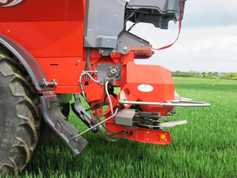European factory prices of CAN have risen by almost €80/t since the summer months.
The retail price of CAN has not risen as much, but is still up by more than €60/t and is currently trading between €225 and €255/t, depending on terms and volume.
Meanwhile, urea prices are in the range €330 to €365/t.
The importers are suggesting that there are still more price rises to come, based on quotes from the producers for March deliveries of CAN.
Some are suggesting that CAN may reach €270 to €280/t in the short term. However, the importers are reluctant to purchase large quantities at these prices, believing that the market could turn if the global urea price falls back in the coming weeks.
Despite these recent increases – especially over the last six weeks – some co-ops, merchants and farmers did secure earlier deals at the lower prices. However, these stocks may now be depleted.
Globally, urea is the price-setter in terms of nitrogen prices, with CAN tracking urea.
China is the world’s largest exporter of urea and 50% of the nitrogen used in the world is urea.
Lower urea prices along with higher input costs in China have reduced Chinese urea production and exports.
Lower production costs
In Europe, CAN producers have enjoyed lower production costs, thanks to lower gas prices.
However margins and profits have fallen for CAN producers over the past year, as fertiliser sales prices fell more than input costs.
Yara, the largest producer of CAN in Europe delivered weaker results in the first nine months last year.
It claimed that lower energy costs offset only around 40% of the decline in fertiliser prices.
Read more
Rising fertiliser prices threaten farm incomes
European factory prices of CAN have risen by almost €80/t since the summer months.
The retail price of CAN has not risen as much, but is still up by more than €60/t and is currently trading between €225 and €255/t, depending on terms and volume.
Meanwhile, urea prices are in the range €330 to €365/t.
The importers are suggesting that there are still more price rises to come, based on quotes from the producers for March deliveries of CAN.
Some are suggesting that CAN may reach €270 to €280/t in the short term. However, the importers are reluctant to purchase large quantities at these prices, believing that the market could turn if the global urea price falls back in the coming weeks.
Despite these recent increases – especially over the last six weeks – some co-ops, merchants and farmers did secure earlier deals at the lower prices. However, these stocks may now be depleted.
Globally, urea is the price-setter in terms of nitrogen prices, with CAN tracking urea.
China is the world’s largest exporter of urea and 50% of the nitrogen used in the world is urea.
Lower urea prices along with higher input costs in China have reduced Chinese urea production and exports.
Lower production costs
In Europe, CAN producers have enjoyed lower production costs, thanks to lower gas prices.
However margins and profits have fallen for CAN producers over the past year, as fertiliser sales prices fell more than input costs.
Yara, the largest producer of CAN in Europe delivered weaker results in the first nine months last year.
It claimed that lower energy costs offset only around 40% of the decline in fertiliser prices.
Read more
Rising fertiliser prices threaten farm incomes






 This is a subscriber-only article
This is a subscriber-only article










SHARING OPTIONS: